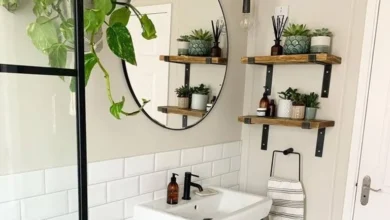Soundproofing Your Space with Decorative Wood Paneling

In today’s bustling world, peace and quiet have become a rare luxury. Whether you’re working from home, recording a podcast, or simply seeking solace in your own space, controlling noise is essential for both comfort and productivity. Traditional soundproofing methods often prioritize function over form—acoustic foam panels and dense insulation don’t always blend well with interior design. Fortunately, a modern solution bridges this gap: soundproof paneling made from decorative wood.
Combining acoustic performance with aesthetic elegance, decorative wood paneling is rapidly becoming a favorite among homeowners, designers, and office planners alike. In this blog, we’ll dive into how wood paneling can transform your space acoustically and visually, the science behind sound absorption, installation tips, and how to choose the right paneling for your needs.
The Growing Need for Soundproofing
Noise pollution has become more than a mere nuisance—it can affect concentration, health, and overall well-being. In urban settings, external sounds such as traffic, construction, and neighbors can easily penetrate living spaces. Meanwhile, open-concept interiors and hard surfaces like glass and tile contribute to echo and poor acoustics within.
As a result, there’s an increasing demand for spaces that not only block external noise but also absorb and dampen internal sound. Soundproof paneling is a dual-purpose solution that reduces noise while enhancing the design aesthetic.
Why Decorative Wood Paneling?
Traditional soundproofing materials like foam and fiberglass are effective but lack style. Decorative wood paneling offers several advantages:
- Visual Appeal: Wood brings warmth, texture, and character to any room. With countless design styles—from rustic barnwood to sleek Scandinavian slats—you can tailor the look to match your space.
- Acoustic Benefits: When properly designed, wood panels can absorb and diffuse sound waves, reducing echo and preventing noise transmission.
- Sustainability: Many modern wood panels are made from sustainably sourced or recycled materials.
- Versatility: Panels can be used on walls, ceilings, and even as freestanding partitions.
By marrying form and function, wood paneling offers a soundproofing solution that enhances rather than detracts from your interior design.
How Soundproof Paneling Works
Sound travels in waves, and when these waves hit a surface, they are either absorbed, reflected, or transmitted. Hard, flat surfaces reflect sound, causing echo and reverb. To combat this, soundproof paneling needs to do two things:
- Absorb sound waves to reduce echo and internal reverberation.
- Block sound transmission from outside sources.
Decorative wood panels achieve this by incorporating:
- Slatted designs: Narrow vertical or horizontal wood slats over an acoustic felt backing trap sound waves and reduce reflection.
- Porous materials: Acoustic felt or foam behind the wood absorbs sound energy.
- Dense cores: Multi-layer constructions with MDF (medium-density fiberboard) help block sound transmission through walls.
The result is a high-performance acoustic system that looks like art and sounds like serenity.
Best Applications for Soundproof Paneling
Decorative wood soundproof paneling can elevate and quiet nearly any environment. Here are some of the best use cases:
1. Home Offices
Background noise is a common problem for remote workers. Wall-mounted panels behind your desk or along adjacent walls can dramatically reduce distractions during calls and video meetings.
2. Recording Studios & Media Rooms
Sound control is critical in these environments. Wood panels offer acoustic enhancement and a stylish backdrop for video content or client presentations.
3. Bedrooms & Living Rooms
If your goal is to create a restful retreat, strategically placing paneling behind beds or along exterior walls can minimize street noise and foster better sleep.
4. Commercial Spaces
Restaurants, conference rooms, and retail stores often suffer from poor acoustics due to high ceilings and hard surfaces. Soundproof paneling helps manage noise levels while enhancing branding and décor.
Installation Considerations
Installing decorative wood soundproof paneling doesn’t always require a professional contractor. Depending on the complexity, it can be a rewarding DIY project. Here’s what you need to know:
1. Surface Preparation
Ensure the wall is clean, dry, and structurally sound. Some panels require a flat drywall surface, while others can be mounted over existing finishes.
2. Layout Planning
Plan your design carefully—measure the space, mark guidelines, and use spacers for even slat placement. Vertical slats tend to make rooms feel taller, while horizontal ones widen the space visually.
3. Mounting Methods
Most panels are mounted using adhesives, screws, or nails. For increased soundproofing, consider adding a layer of acoustic foam or rock wool insulation behind the panels.
4. Edge Finishing
Trim edges with matching wood borders or metal strips for a polished look. For added flair, incorporate lighting between slats or around the perimeter.
Choosing the Right Soundproof Paneling
With many options available, it’s important to select the right paneling for your unique needs. Here are the key factors to consider:
1. Material
Look for wood veneers or solid wood over an acoustic core like MDF or felt. Natural woods like oak, walnut, and ash provide visual richness.
2. Acoustic Rating
Manufacturers often provide NRC (Noise Reduction Coefficient) ratings. An NRC of 0.7–1.0 indicates strong sound absorption capabilities.
3. Size and Coverage
Panels come in various sizes, from full-wall installations to modular pieces. Consider where sound is entering or reflecting and cover accordingly.
4. Budget
Prices vary based on material quality and design complexity. While some budget options offer good absorption, premium lines deliver superior acoustics and aesthetics.
5. Customization
Many vendors offer custom stains, finishes, or even logos etched into panels—ideal for commercial branding or matching existing décor.
Maintenance and Longevity
Decorative wood soundproof paneling is low-maintenance and durable. To keep it looking its best:
- Dust regularly with a microfiber cloth.
- Use wood-safe cleaners sparingly.
- Avoid excessive moisture or direct sunlight, which can warp or fade certain finishes.
When properly installed and maintained, these panels can last for decades, continuing to enhance your space both visually and acoustically.
The Environmental Edge
Sustainability is at the top of many homeowners’ and businesses’ minds. Fortunately, many manufacturers now offer eco-friendly paneling options made from:
- Recycled wood fibers
- Low-VOC adhesives and finishes
- Certified sustainable wood sources (e.g., FSC-certified)
By choosing green-certified soundproof paneling, you’re not only reducing noise but also your environmental footprint.
Final Thoughts
Decorative wood paneling is no longer just a stylistic flourish—it’s a powerful tool in the modern soundproofing arsenal. Offering the perfect blend of acoustics and aesthetics, it caters to the growing desire for spaces that are not only quiet but beautiful. Whether you’re redesigning your home office, upgrading a media room, or improving a noisy café, soundproof paneling provides a transformative solution that speaks volumes in silence.




